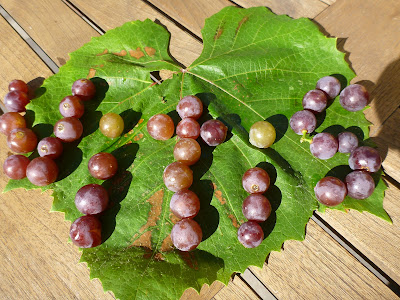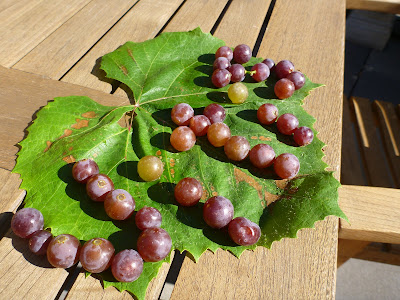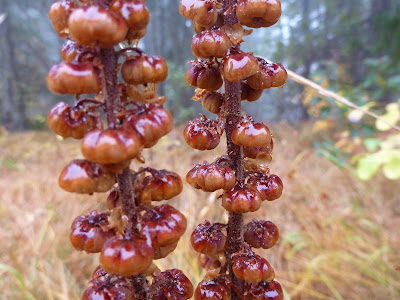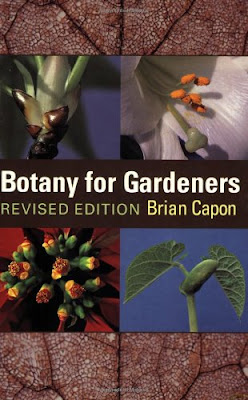Charles Darwin and the Mystery of Mysteries Book Cover (left), The Journal of a Disappointed Man Cover (right)

Mystery of Mysteries
Charles Darwin and the Mystery of Mysteries by Niles Eldrege and Susan Pearson is book for kids (ages 9 and up) that does a good job of talking about who Charles Darwin was and what his life was like in England in short, easy to understand passages. It includes short vignettes with pictures of the people that were important in Darwin’s life. The title of the 2010 book comes from a phrase that Darwin wrote in his travel journal while on his famous five year sea voyage: “Hence, both in space and time, we seem to be brought somewhat near to that great fact—that mystery of mysteries—the first appearance of new beings on this earth.” (see Voyage of the Beagle (Illustrated) for example).
The cast of characters in the Mystery of Mysteries are introduced as they more or less made in appearance in Darwin’s life: Robert Waring Darwin (his father), Susannah Wedgewood Darwin (his mother), Erasmus Darwin (his brother, also the name of his grandfather), mentor Reverend Adam Sedgwick, Captain Fitzroy, Joseph Hooker, Emma Wedgewood (his wife), and Annie (his daughter) to name just a few. About half of the book is spent on Darwin’s famous voyage and is a very approachable introduction to the journey.
Life’s Mysteries and the Disappointed Man
Darwin died in 1882 - toward the end of the Victorian era (1837 - 1901). A few years later, in 1889, Bruce Frederick Cummings was born and lived his adult life in the Edwardian era (1901 - 1910) and World War I era (1914 - 1918). Under the pseudonym W.N.P. Barbellion he authored the work The Journal of a Disappointed Man: An Intimate Edwardian Diary. Cummings was diagnosed with a disease today known as multiple sclerosis in 1915 and he died in 1919.
The diary is chatty, pithy, introspective, and sad. At times, it’s hard to read - as if you are eavesdropping in someone’s mind and you don’t have the complete context. Then, you get the zingers that keep you lingering, reading them over and over. Here are some that stood out to me:
“As for me, I am proud of my close kinship with other animals. I take a jealous pride in my Simian ancestry. I like to think that I was once a magnificent hairy fellow living in the trees and that my frame has come down through geological time via sea jelly and worms and Amphioxus, Fish, Dinosaurs, and Apes. Who would exchange these for the pallid couple in the Garden of Eden?”
Barbellion, W.N.P. (2011-06-01). The Journal of a Disappointed Man : An Intimate Edwardian Diary (Victorian London Ebooks) (Kindle Locations 376-378). Victorian London Ebooks. Kindle Edition.
“I have discovered I am a fly, that we are all flies, that nothing matters. It's a great load oft my life, for I don't mind being such a micro-organism — to me the honour is sufficient of belonging to the universe — such a great universe, so grand a scheme of things. Not even Death can rob me of that honour.”
(Kindle Locations 928-929)“Life opens to me, I catch a glimpse of a vision, and the doors clang to again noiselessly. It is dark. That will be my history.”
(Kindle Locations 1038-1039)“My life has always been a continuous struggle with ill-health and ambition, and I have mastered neither. I try to reassure myself that this accursed ill-health will not affect my career. I keep flogging my will in the hope of winning thro' in the end. Yet at the back of my mind there is the great improbability that I shall ever live long enough to realise myself. For a long time past my hope has simply been to last long enough to convince others of what I might have done — had I lived. That will be something. But even to do that I will not allow that I have overmuch time. I have never at any time lived with any sense of security. I have never felt permanently settled in this life — nothing more than a shadowy locum tenens, a wraith, a festoon of mist likely to disappear any moment.”
(Kindle Locations 1725-1731)“If only I had the moral courage to play my part in life — to take the stage and be myself, to enjoy the delightful sensation of making my presence felt, instead of this vapourish mumming.”
(Kindle Locations 2191-2192)“My purpose is to move about in this ramshackle, old curiosity shop of a world sampling existence. I would try everything, meddle lightly with everything.”
(Kindle Locations 2384-2385)
Fordlandia Book Cover (left), Fordlandia Album Cover (right)

Fordlandia: Disappointment in the Jungle
Speaking of sadness and disappointment, I also finished the 2010 book Fordlandia: The Rise and Fall of Henry Ford’s Forgotten Jungle City by Greg Grandin. The book describes Henry Ford’s attempt to create a large rubber plantation in the Amazon jungle from 1928 until it was sold in 1945 by Ford’s grandson. It was a failure for many reasons and the more it failed, the more the reasons for carrying on became idealistic.
The primary goal of the plantations (there were two plantations) was to produce rubber cheaply at a time when there was a British monopoly on rubber production most of which was coming from Asia. Ironically the rubber plantations in Asia were started from seeds smuggled out of the Amazon years earlier. Cheap rubber would help Ford since cars needed tires. (In the early 1930s large scale production of synthetic rubber was years in the future, and Thomas Edison, a friend and advisor to Ford, debunked reports that appeared at the time that it was possible. A guess a light bulb didn’t go on in Edison’s head?)
The plant in question at the center of the failure of Fordlândia (in Portuguese) is the rubber tree, Hevea brasiliensis, which is native to South America. Growing plantation-style rubber seems like it should be possible since it was being done in Asia? From the book (Chapter 21: Bonfire of the Caterpillars) Grandin explains why that wasn’t the case at all:
“Hevea is what botanists call a climax plant, meaning that it developed in an ecosystem— in this case the Amazon— that was at the apex of its complexity. Unlike relatively new pioneer crops like wheat, corn, or rice, which grow rapidly and throw off many fertile seeds and flourish in a variety of habitats, including large plantations, Hevea is not so adaptable. Its genetic composition is as old and evolved as the jungle that surrounds it. To use a metaphor associated with human behavior, Hevea is set in its ways. It grows slowly, its girth is thick, its seeds need coaxing, and it likes to hide from predators by mixing with other jungle trees. Yet despite these survival strategies, rubber, like many other tropical plants, can be a successful commercial crop when completely removed from its home environment, freed from the pests and plagues that evolved and adapted with it. While Southeast Asia was similar enough in climate to the Amazon, its native insects, parasites, and spores ignored South American rubber and so trees could be planted in close rows. In their original context, on the other hand, rubber trees grown near one another proved susceptible to pestilence, as Weir put it, with “every change of humidity.”
Grandin, Greg (2010-04-27). Fordlandia: The Rise and Fall of Henry Ford's Forgotten Jungle City (p. 318). Macmillan. Kindle Edition.
The Benson Ford Research Center, a library and archive located at the Henry Ford, has historic images of Fordlandia.
The 2008 4AD release, Fordlandia, by the Icelandic composer and producer Jóhann Jóhannsson, was inspired by the failed Ford project. Strangely, I’ve listened to this album for years before finding out the story about Fordlandia and always found the music haunting and sad. It is interesting to have a story that goes along with it.
Evolution You Can See: Disappointed Creationists
For less time than it took for the folly of Fordlandia to become evident, and decades later, a husband and wife team methodically studied birds over twenty years and showed that you can see evolution in progress much to the disappointment of creationists. The Beak of the Finch: A Story of Evolution in Our Time [1995] by Jonathan Weiner tells the story. It is a story about evolution, the Galápagos Islands, finches, and in particular the story of that husband and wife team, Rosemary and Peter Grant, and their work in the Galápagos studying those finches. I read this book after we returned from the Galápagos and many of Weiner’s descriptions of Daphne Major evoked fond memories. The Beak of the Finch is one of the most interesting books I’ve read in a long time. Weiner weaves facts and story together smoothly all the while making complex science concepts accessible to the reader.
The central idea in the book is this that we can watch evolution at work: “…that Darwin did not know the strength of his own theory. He vastly underestimated the power of natural selection. Its action is neither rare not slow. It leads to evolution daily and hourly, all around us, and we can watch.” Daphne Major - the island the Grants returned to year after year - offers a perfect laboratory to study evolution of the finches (primarily Geospiza).
In the last few chapters, Weiner takes the idea of watching evolution at work and applies it to the issues of the growing resistance of insects to insecticides and bacteria to anti-bacterial drugs (The Resistance Movement) and global warming (A Partner in the Process). These are issues that all readers can surely relate to, right?
The Beak of the Finch Book Cover Front (left) and Back (right)























